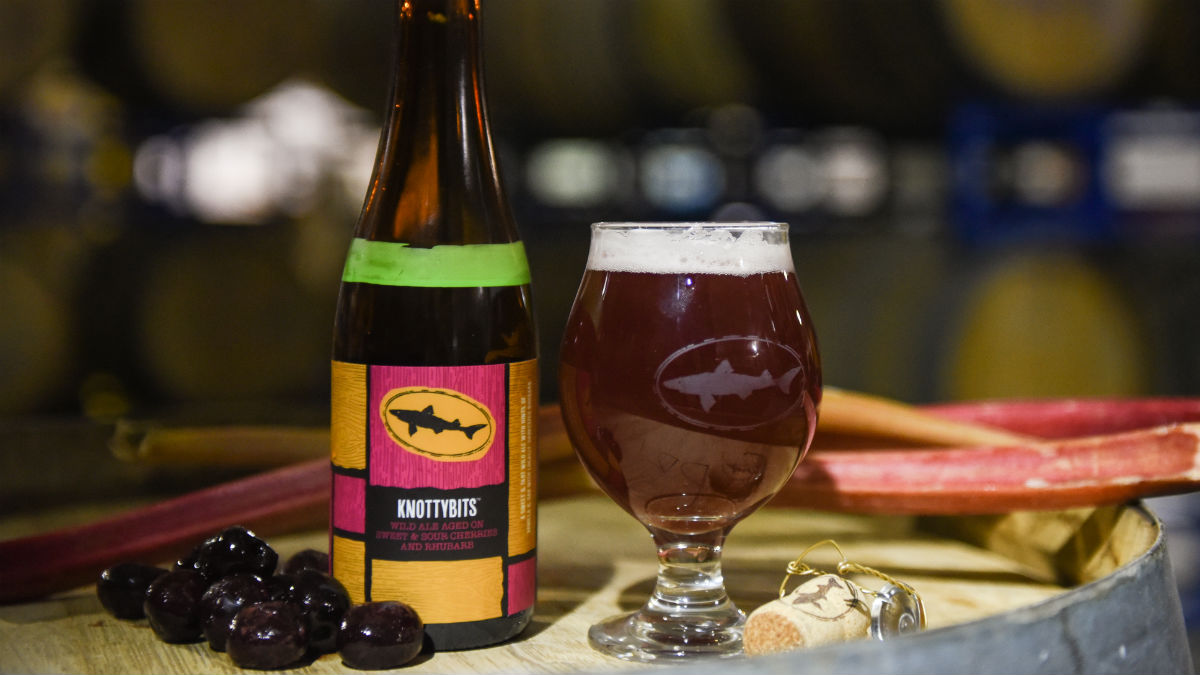The sultan of sour beers, Dogfish Head Craft Brewery, is starting a new wild beer program called Wooden It Be Nice! It will be ushered in with the release of three limited-batch wild ales before the end of the year, each using wood aging and a mash of herbs, spices, and local Delaware fruits.
As a quick recap, Dogfish Head’s motto is “Off-Centered Ales for Off-Centered People” — it makes perfect sense that they’d do this. Remember, these are the same guys that made mace beer.
Never heard of a wild beer?
Unlike traditional brewing, a wild ale is fermented with “wild yeast variations like Brettanomyces and often times with bacteria like Lactobacillus or Pediococcus,” says Dogfish Head in an official release. Yeast and bacteria are then delicately introduced to wood-aged beer, promoting an array of flavors and degrees of sourness, funkiness, and fruitiness. Due to the “untamable nature” of the yeast, a beer can sit in its barrel for months or years until the Dogfish brewers deem it ready for tapping.

The first Wooden It Be Nice! release is a wild ale called KnottyBits that comes in at 8.2 percent alcohol by volume and will be available September 29. Try not to crave a beer after reading how it’s made: KnottyBits is wood-aged for a year with Brettanomyces before being racked onto hundreds of pounds of sweet and sour cherries and locally-sourced rhubarb from Fifer Orchards. Once bottled, KnottyBits holds an elevated level of carbonation similar to a ruby-red sparkling wine. It comes in a 375 ml bottle and will cost you $10, which beats bringing a bottle of white to a dinner party when you’d rather be savoring a sour.
Released September 29, only 2,000 hand-bottled, -corked, and -painted Knottybits will be available. And it’s only being sold in Dogfish’s home of Milton, Delaware. Get your Black Friday elbows ready because if KnottyBits proves to be anywhere as delicious as the Dogfish Head’s session sour SeaQuench Ale, you’re gonna be fighting for a bottle.
“SeaQuench Ale … is currently the top-selling sour in America,” says Sam Calagione, CEO and founder of Dogfish Head Craft Brewery. Meaning it’s better than the peach wild ale Festina Lente, the first sour Dogfish ever created about 15 years ago that won bronze at the 2006 World Beer Cup.

Wooden It Be Nice! is not only a cool, craft program but a promise that the spirit of Dogfish Head (we haven’t decided if it’s a fish with a dog’s head or the opposite) won’t lose sight of its humble craft origins and love of sour and wild ale exploration. After all, Dogfish says they opened 23 years ago as the smallest American craft brewery in the country and that’s a badge of honor.
November will mark the second Wooden It Be Nice! release with the farmhouse ale Wet Hop American Summer (7.75 percent ABV). Only 1,500 bottles will be made of this Chardonnay barrel-aged, citrus, funky, hoppy brew. After resting for a year with Brettanomyces, the Wet Hop was racked onto freshly harvested and hand-selected whole leaf Citra hops, still wet from the fields.
Then you’ll have to wait just one more month for the mid-December release of wild ale Eastern Seaboard (8 percent ABV), which is brewed with blackberries and beach plums. After a year and a half of aging in wine barrels, Eastern Seaboard is drenched in hundreds of pounds of blackberry and plums, handpicked and selected by Dogfish brewers. The gorgeous jamminess of the blackberry and tartness of the plums pair well with the dryness of this beer. Bottled in a Champagne-like condition, the color is brilliantly violet. Only 2,000 bottles will be available at the Milton Brewery.


